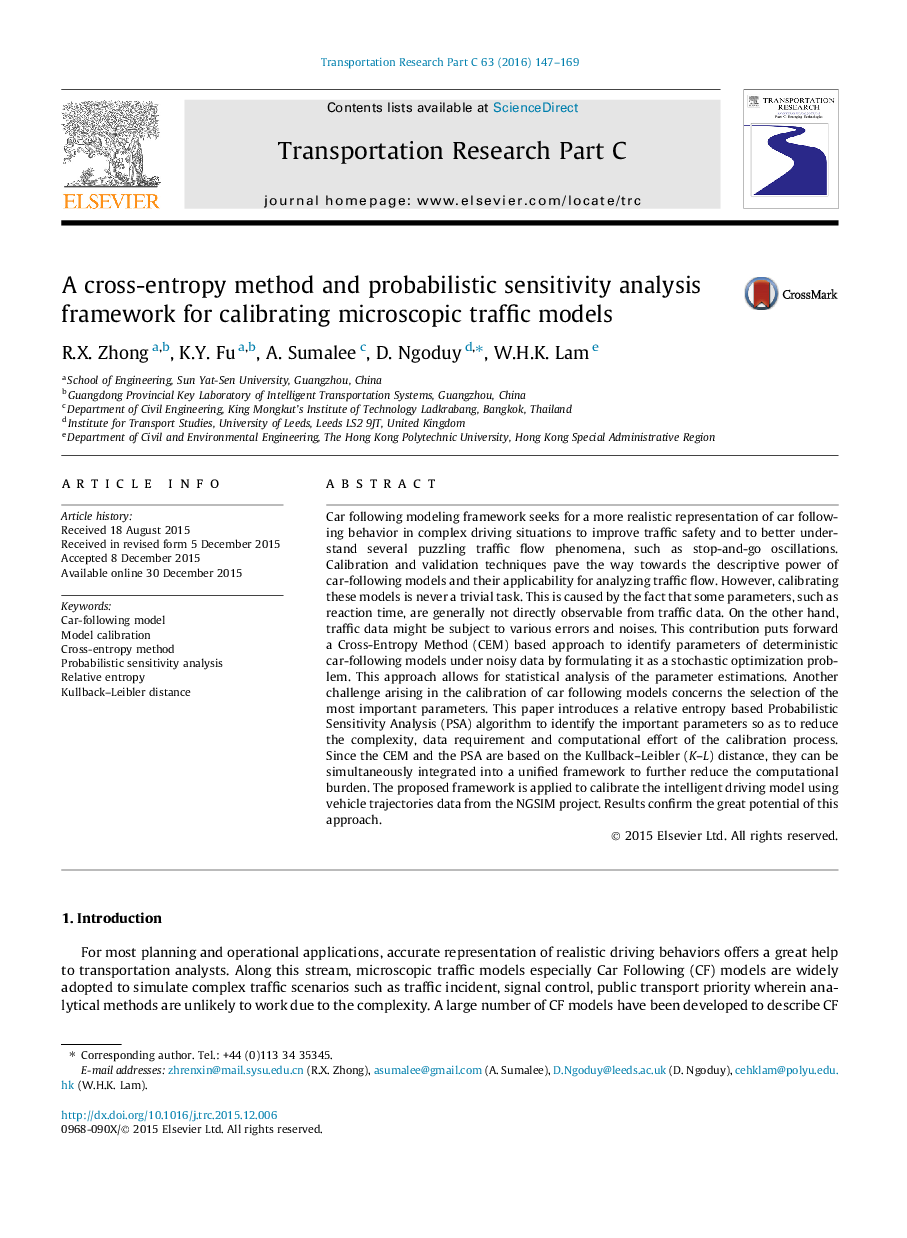| کد مقاله | کد نشریه | سال انتشار | مقاله انگلیسی | نسخه تمام متن |
|---|---|---|---|---|
| 526316 | 869091 | 2016 | 23 صفحه PDF | دانلود رایگان |
• A framework based on the CEM and PSA is proposed to calibrate microscopic traffic models and to identify important parameters simultaneously under noisy data.
• Obtaining plausible solutions sufficiently close to the global optimum.
• The PSA can handle nonlinear and/or non-Gaussian distribution with heavy tail.
• Mutual information concept for quantifying data richness.
Car following modeling framework seeks for a more realistic representation of car following behavior in complex driving situations to improve traffic safety and to better understand several puzzling traffic flow phenomena, such as stop-and-go oscillations. Calibration and validation techniques pave the way towards the descriptive power of car-following models and their applicability for analyzing traffic flow. However, calibrating these models is never a trivial task. This is caused by the fact that some parameters, such as reaction time, are generally not directly observable from traffic data. On the other hand, traffic data might be subject to various errors and noises. This contribution puts forward a Cross-Entropy Method (CEM) based approach to identify parameters of deterministic car-following models under noisy data by formulating it as a stochastic optimization problem. This approach allows for statistical analysis of the parameter estimations. Another challenge arising in the calibration of car following models concerns the selection of the most important parameters. This paper introduces a relative entropy based Probabilistic Sensitivity Analysis (PSA) algorithm to identify the important parameters so as to reduce the complexity, data requirement and computational effort of the calibration process. Since the CEM and the PSA are based on the Kullback–Leibler (K–L) distance, they can be simultaneously integrated into a unified framework to further reduce the computational burden. The proposed framework is applied to calibrate the intelligent driving model using vehicle trajectories data from the NGSIM project. Results confirm the great potential of this approach.
Journal: Transportation Research Part C: Emerging Technologies - Volume 63, February 2016, Pages 147–169
